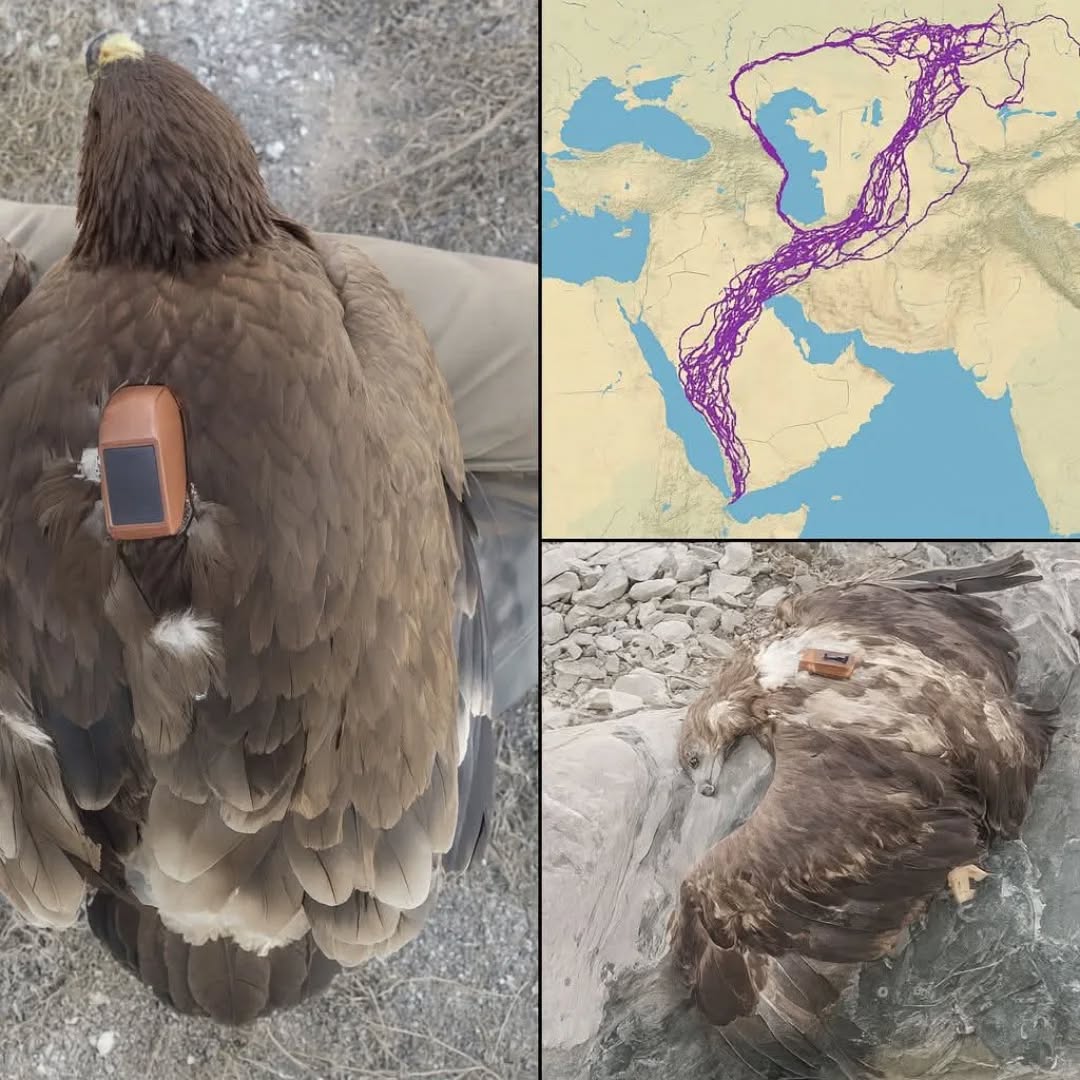For twenty years, a single eagle carved an extraordinary journey across continents—soaring over mountains, deserts, and vast steppes. Yet, despite flying thousands of kilometers, this bird never once crossed the sea.
Tracked by Russian scientists using GPS technology from the early 2000s until its death in Saudi Arabia, the stepparian eagle (Aquila nipalensis) offered a remarkable insight into the instinct, adaptation, and physics that govern the lives of migratory birds.

The eagle’s flight map is as stunning as it is puzzling. It reveals sweeping loops across the vast Eurasian steppes, long detours through the Caucasus and Central Asia, and curving paths that often skirted right up to coastlines—only to turn back inland. Never once did this bird attempt to cross a body of water wider than a river or lake.
To the scientists tracking her, the eagle’s journey looked almost like art—graceful, deliberate, and full of hidden logic. But behind that apparent caution lay the truth of evolutionary genius.

Why did she never fly over the sea?
The answer lies in the physics of flight. Like many large birds of prey, stepparian eagles rely on thermal currents—columns of rising warm air created by uneven heating of the ground—to soar efficiently over long distances. These thermals allow the bird to glide with minimal energy use, gaining altitude without flapping its wings for hours.
But over the sea, these life-sustaining thermals are almost nonexistent. The ocean’s surface, uniform in temperature and texture, doesn’t generate the vertical air movement that thermals provide. For a bird of her size and flight strategy, a long journey over water would be risky—potentially fatal. Her body knew what science only recently confirmed: crossing the sea was not worth the risk.

This avoidance wasn’t a mistake or hesitation—it was adaptation in its purest form. Over thousands of generations, birds like this eagle evolved with an instinctive knowledge of where their survival chances were highest. She wasn’t afraid of the sea; she understood it in a way no map or satellite image ever could.
Her choices reveal how evolution shapes not just the body, but the behavior—an inherited wisdom passed through DNA, telling her to trust the invisible thermals over land and to veer away from the perilous void over the waves.
Her journey ended far from where it began, in the arid expanses of Saudi Arabia. But thanks to the GPS tracker she carried for two decades, her life became a data-rich testament to endurance, intelligence, and adaptation.
In an era where artificial intelligence and advanced algorithms attempt to map every corner of behavior, one eagle reminded us of the quiet brilliance of instinct. Her flight path, traced over 20 years, tells a story not just of where she went—but of how evolution writes its own map, one thermal current at a time.



